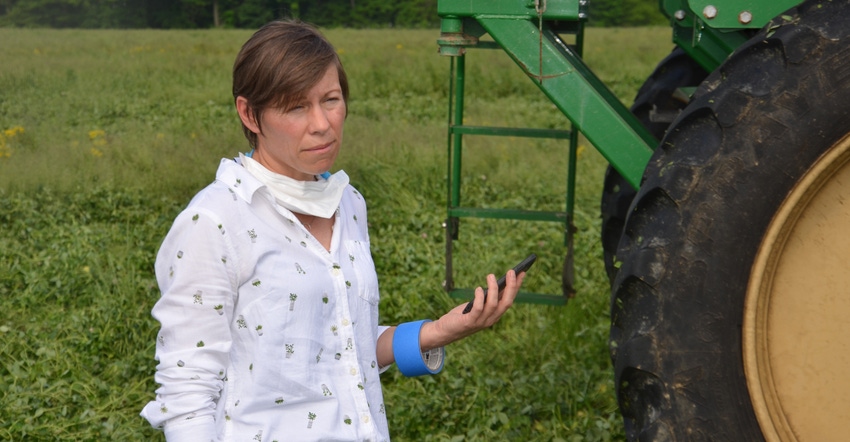May 30, 2022

Stephanie McLain celebrated her birthday on Sept. 18, 2017, by starting a new venture as the soil health specialist for Indiana Natural Resources Conservation Service. She had big shoes to fill. Barry Fisher, Indiana’s first soil health specialist, took a national position with the NRCS Soil Health Division. He has since retired.
Indiana was looking for someone to continue the message. Coming from a position in Nebraska NRCS and having never seen the movie “Hoosiers,” McLain jumped in with both feet and became the leader of Indiana NRCS’ soil heath movement.
After guiding that ship for four and a half years, McLain found an opportunity she could not pass up. She has returned home to Minnesota to serve as the state soil health specialist there, living near the farm where she grew up.
The soil health movement throughout Indiana benefited greatly from her time here. Her enthusiasm and willingness to share the message of soil health reached a wide range of people, including visitors at the Indiana State Fair, farmers at various field days and many Indiana Conservation Partnership employees. Whether explaining different forms of soil microbiology, ticking off the benefits of various cover crop species or presenting rainfall simulator demonstrations, McLain brought a contagious enthusiasm to soil health. She never met a stranger and can talk soil health with anyone.
Memorable encounters
Here are examples of McLain’s efforts and commitment:
Field day demonstrations. Blistering hot weather never stopped McLain from showing how the properties of no-till soil differ from conventional soil in various demonstrations using clumps of soil and giant test tubes. Every time she did it, no-till soil held together much better and floated at the top, while conventional soil quickly dissolved, losing any semblance of structure.
In-field training. Farmers typically don’t like to be bothered while planting corn, especially if it’s mid-May or after. That didn’t stop McLain from asking Roger and Nick Wenning, Greensburg, if she could bring more than a dozen soil and water conservation partnership employees to their farm to watch them plant green into standing clover. Not only were they in the middle of planting, but they also were trying out a new idea — mowing cover before planting vs. planting straight into cover. In the end, it worked well either way, and they didn’t notice a significant difference by the end of the season. The employees learned from the Wennings, and the Wennings picked up a few ideas from the employees, too.
In-classroom training. Despite a rainstorm and low attendance, McLain explained soil health at a Boone County Soil and Water Conservation District meeting late last year. As a result, those who attended were treated to a classic example of two soil slices laid side by side, a six-year no-till soil vs. a conventional soil from the same field, with McLain pointing out the differences. By the time she finished, you could not only see the difference, you also could feel it and even smell the difference! Advantage no-till!
On behalf of Indiana NRCS, the Indiana Conservation Partnership and Indiana Prairie Farmer, here’s wishing all the best to Stephanie McLain in her new venture. Indiana’s loss is truly Minnesota’s gain. Godspeed, come back and visit, and in the meantime, make sure you watch “Hoosiers.”
Don Donovan contributed to this story. He is a district conservationist with NRCS.
You May Also Like




